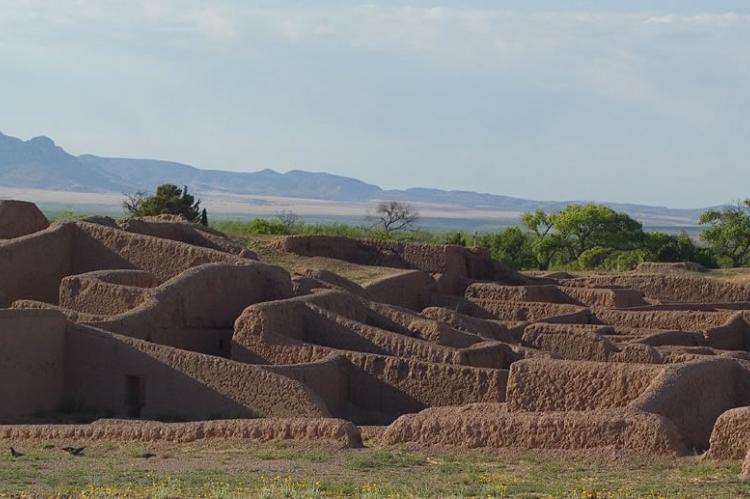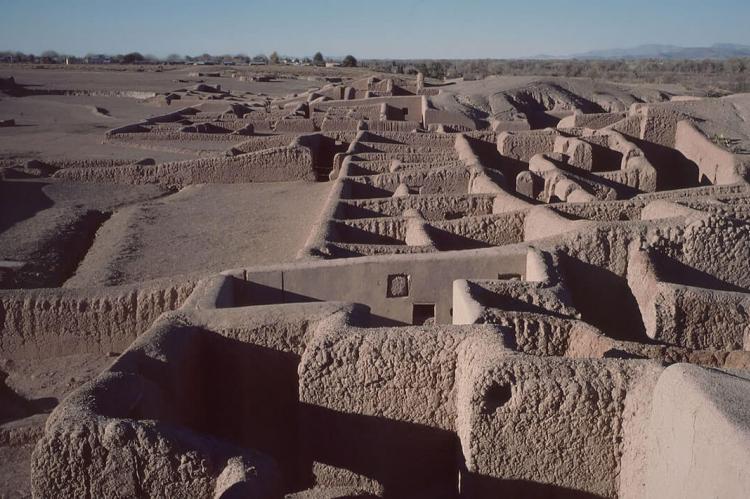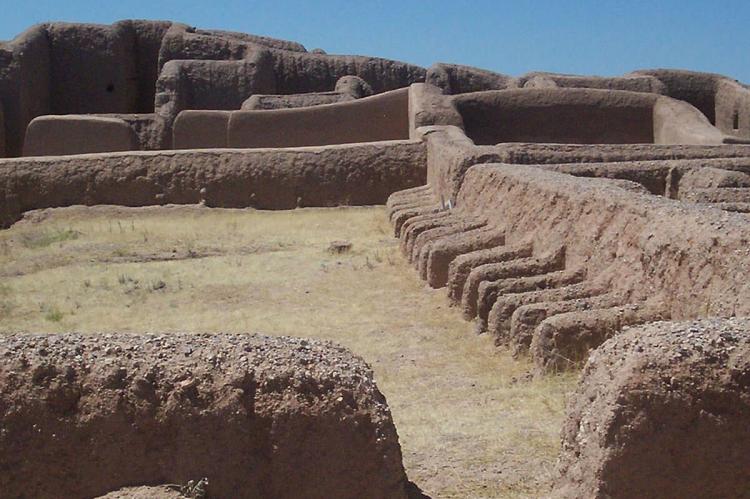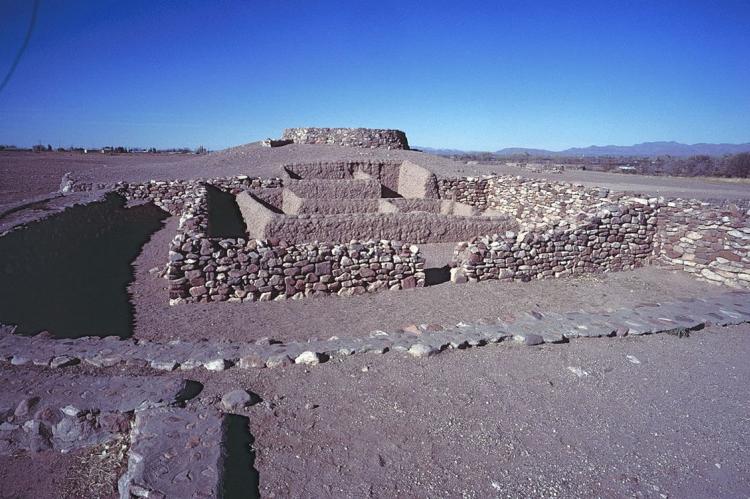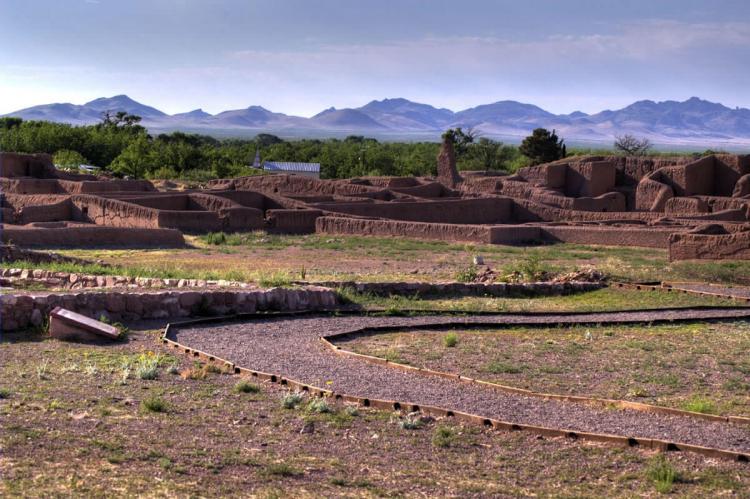Casas Grandes: A Window into Ancient Pre-Columbian Civilization
The archaeological site of Casas Grandes, also known as Paquimé, was home to a prosperous civilization that flourished between the 11th and 14th centuries in the barren terrains of northern Mexico and offers insights into the societies that inhabited the region before the arrival of European explorers.
The Rise and Fall of Casas Grandes: Insights into Ancient Mogollon Civilization
Casas Grandes, also known as Paquimé, is a remarkable archaeological site nestled in the arid landscape of northern Mexico's Chihuahua state. Between the 11th and 14th centuries, the site was home to a flourishing civilization representing the Mogollon culture's pinnacle. Situated near the foot of the Sierra Madre Occidental, Casas Grandes offers invaluable insights into the sophisticated societies that thrived in the region long before European explorers arrived in the Americas. Its unique architecture, cultural significance, and role as a trading hub position Casas Grandes as one of the most important pre-Columbian sites in North America. Recognized by UNESCO as a World Heritage Site in 1998, Casas Grandes continues to shed light on the ancient peoples of this region.
Architecture: An Ingenious Legacy
The architecture of Casas Grandes is one of its most defining features, revealing its ancient inhabitants' advanced engineering and urban planning skills. The site is dominated by a complex network of adobe structures, which include multi-storied buildings, ceremonial centers, and ball courts, all interconnected by a series of well-designed pathways. The adobe construction showcases the careful planning and organization of the society, with its large T-shaped doorways serving both functional and symbolic purposes. These doors, often a hallmark of Mogollon architecture, reflect a blend of practicality and artistic expression.
One of the most striking aspects of the architecture is its layout, suggesting a high degree of social coordination. The presence of ceremonial complexes, including evidence of religious rituals and public gatherings, highlights the communal nature of the society. In addition to its residential and ceremonial buildings, Casas Grandes also had an extensive water management system, demonstrating the inhabitants' ingenuity in harnessing natural resources in a harsh environment. These engineering feats reflect not only the daily life of the people but also their deep connection to their surroundings.
Cultural Exchange and Trade: A Thriving Hub
Casas Grandes was more than an architectural wonder; it was a thriving cultural exchange and economic activity center. Located at a crossroads between the southwestern United States and Mesoamerica, the site was a major trading hub in pre-Columbian North America. Its strategic location facilitated the exchange of goods and ideas between different regions, linking the Pueblo cultures to the north with the more advanced civilizations of Mesoamerica. The movement of goods through Casas Grandes contributed to the site's prosperity and influence in the region.
Archaeological excavations have uncovered a wealth of artifacts that reveal the skilled craftsmanship of the Casas Grandes people. Pottery, textiles, and turquoise jewelry are among the many items found at the site, providing a glimpse into the vibrant artistic culture that flourished here. These artifacts also indicate the extensive trade networks that connected Casas Grandes to distant regions, with copper, seashells, and exotic bird feathers making their way to the site.
In addition to its economic role, Casas Grandes was a spiritual and ceremonial center. The discovery of ball courts and evidence of ritual practices suggests that religious activities played a significant role in the inhabitants' daily lives. The complexity of the social structures is reflected in the hierarchy of the society, with elites likely controlling both trade and religious practices.
Economic Prosperity: A Nexus of Trade Networks
The economic importance of Casas Grandes lies in its role as a nexus of trade. The site's inhabitants engaged in extensive exchange networks that connected them to communities as far away as the southwestern United States and Mesoamerica. Goods such as ceramics, turquoise, and copper were traded along these routes, making Casas Grandes a key player in the economic landscape of pre-Columbian North America. The diversity of materials found at the site suggests that its people had access to a wide range of resources, further underscoring its importance as a trading center.
The site's location at the headwaters of the Casas Grandes River provided a natural advantage for trade. The river supported agriculture in the region and facilitated the transport of goods, contributing to the region's overall prosperity. The complex exchange networks that passed through Casas Grandes helped shape its economy, ensuring that the site maintained a position of influence in the broader cultural landscape of the time.
Decline and Abandonment: A Mystery Unfolding
Archaeologists and historians debate the reasons behind Casas Grandes's decline. By the mid-14th century, the site experienced a gradual decline, and it was eventually abandoned by the 15th century. While the exact causes of this decline are unknown, several theories have been proposed. Environmental changes, including droughts and resource depletion, may have strained the society's ability to sustain itself. Internal conflicts or external pressures from neighboring groups could have contributed to its downfall.
Despite its decline, Casas Grandes continues to captivate researchers and archaeologists. Ongoing excavations have uncovered new evidence that sheds light on the daily life of its inhabitants and the factors that may have led to the site's abandonment. As more is learned about the site's history, the story of Casas Grandes continues to evolve, offering new insights into the rise and fall of ancient civilizations.
World Heritage Status and Preservation
In recognition of its cultural and historical significance, Casas Grandes was designated a UNESCO World Heritage Site in 1998. This prestigious designation underscores the site's importance not only as an archaeological treasure but also as a testament to the achievements of the ancient Mogollon culture. However, the adobe structures of Casas Grandes are fragile, and ongoing preservation efforts are crucial to protect the site from further degradation.
Preservation initiatives focus on stabilizing the adobe buildings and protecting the site from environmental factors such as erosion and extreme weather conditions. These efforts ensure that future generations can continue to explore and learn from this remarkable archaeological site. Casas Grandes's importance extends beyond its physical structures; it represents a cultural legacy that highlights the interconnectedness of ancient societies in the Americas.
Conclusion
Casas Grandes is a testament to the complexity and sophistication of pre-Columbian civilizations in northern Mexico. Its unique architecture, cultural significance, and role as a major trading center offer a glimpse into the rich history of the Mogollon culture and its connections to other regions of North America and Mesoamerica. The site's decline remains a mystery, but its legacy endures through ongoing research and preservation efforts. As one of the most important archaeological sites in the region, Casas Grandes continues to captivate scholars and visitors alike, serving as a reminder of the enduring human spirit and the achievements of ancient civilizations.
